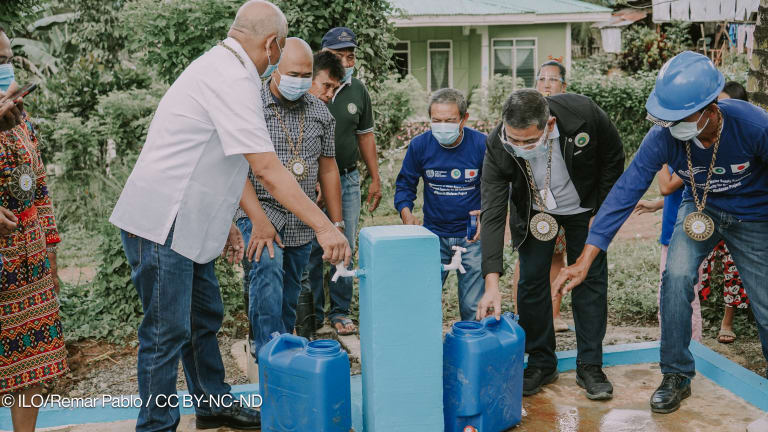
Since the election of Tony Abbott as Australian prime minister in September 2013, trying to figure out the fate — and path — of Australian foreign aid almost feels like a guessing game, particularly to development partners.
While a handful of details have been rolled out nine months after the decision to merge the now-defunct Australian Agency for International Development into the Department of Foreign Affairs and Trade, many questions over the future of the country’s aid program remain unanswered. Among the uncertainties is what will happen to hundreds of former AusAID employees after the merger, as well as specific programs and partners that will be affected by the more than 7 billion Australian dollars ($6.59 billion) in aid budget cuts over the next five years.
Foreign Minister Julie Bishop revealed Wednesday that Australia is taking on a “new aid paradigm” focused on economic partnerships through private sector engagement. Bishop laid out six priority areas where the country’s aid should be centered to make Australian official development assistance “responsible, affordable and sustainable,” while stressing that development partners will have to adhere to strict performance benchmarks in delivering aid — or risk having their funds suspended and even terminated.
Local and international nongovernmental organizations initially welcomed most of the changes, but stressed that this plan will only be effective if the biggest winner is the poorest people in Asia-Pacific. Even former Australian aid staff noted the benchmarks laid out by the Abbott administration should not only be applied to implementers, but to donors as well.
“It would be disappointing and misguided if these performance benchmarks are focused solely on holding contractors to account for project performance when in fact both the donor and the recipient also have a significant impact on the success or failure of development projects,” Gary Andrews, a former AusAID official in the 1980s and 1990s, told Devex.
Pieces of the puzzle
So are these benchmarks and priority sectors really the way to go for Australian aid? It’s hard to say, given the lack of specific details offered by DFAT, as some NGOs suggest.
In March, the Australian Senate released a report with several recommendations — including priority sectors and benchmarks — on how DFAT and other government agencies could make the country’s ODA more effective and efficient without forgetting humanitarian responsibilities.
Let’s compare the suggestions with the new foreign aid policy Bishop announced Wednesday.
Priority sectors were consolidated under more general themes. Following recommendations from the Senate report, agriculture, fisheries and water management were subsumed into food security, while the health and education cluster now covers disability and medical research.
Governance — a long-term priority for Australian aid — has been strengthened with new fraud control and anti-corruption strategies that are expected to be implemented in all country and regional programs by July 2015. Infrastructure and trade were also added, putting more importance on private sector-led development efforts for inclusive economic growth in partner countries.
Gender and women’s empowerment was included in the document, and Australia will now require at least 80 percent of development projects and investments to have some sort of gender component in their implementation.
But there are significant omissions. Disaster preparedness, climate change and environment measures, for instance, were not included.
Broken promises on the budget
Comparing the recommendations section on the aid budget from the Senate report with Bishop’s new foreign policy yields mixed results.
While an overarching framework has been laid out, the pre-election promises to increase foreign aid spending to 0.5 percent of gross national income and pegging it to the consumer price index were broken. Currently, Australian ODA stands at about 0.3 percent of GNI — way below the 0.7 percent standard for OECD countries — and implementation of the CPI-based adjustment has been delayed by two years.
The Senate also recommended an increased focus on Africa, even encouraging the Abbott government to become a member of the African Development Bank. But as the recently released federal budget made clear — by slashing ODA to sub-Saharan Africa 23.3 percent — that’s just not going to happen for now.
Bishop did echo the report’s suggestion, however, that Australia concentrate its foreign aid efforts on the Indo-Pacific region, and that’s where 90 percent of ODA will go from now on.
Read more development aid news online, and subscribe to The Development Newswire to receive top international development headlines from the world’s leading donors, news sources and opinion leaders — emailed to you FREE every business day.








